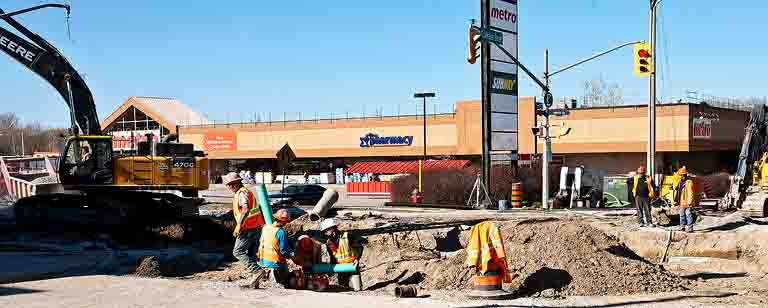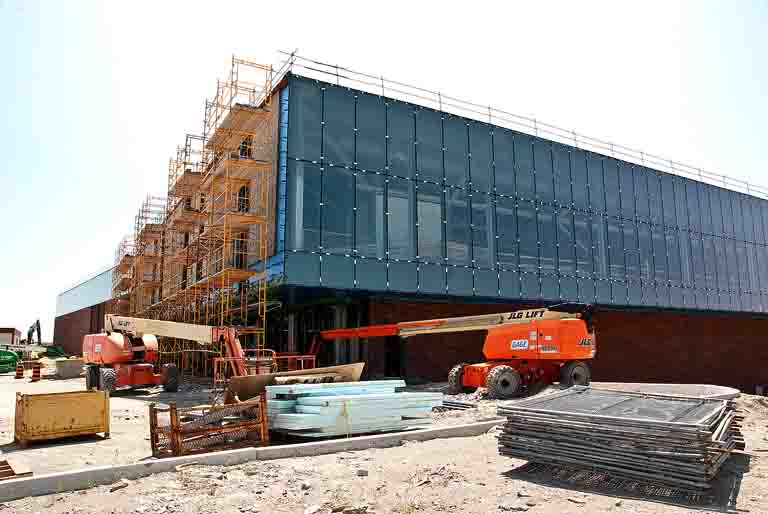Your Property Taxes
By John Swartz
Last December Orillia concluded budget deliberations, settling on a 3.58% increase. However, with math Hollywood accountants are envious of, when you get your bill the increase will only be 2.9%.
How can that be, you might ask? It’s because your annual property tax levy is made up of two parts, the amount your council decides on, and the education portion Queen’s Park decides you pay. Education taxes have been going down. The annual increase is applied to the amount you paid last year.
So if the first part in 2020 is going up by 2 and the second part is going down by -1, then the total increase is only 1. Got it?
City treasurer Jim Lang, presented the final chapter of the 2020 budget to council last week and the by-laws were passed this week. The annual budget haggling is done in every November and sort of finalized in December. The only thing left hanging is the final results of the 2019 budget, which can affect what happens later in the spring when council formalizes everything.
Money Left Over
Usually there is a surplus and all council has to do is decide how to allocate extra money to reserve accounts. There was one time about 10 years ago when there was a $500,000 shortfall because of a math mistake and that time council had to go back into the actual budget and shift some things around. In short a surplus in any one year does not have an effect on the next year’s budget, but a deficit does.
So much was left over from 2019. Generally revenues combined with savings on operations contributed $1.2 million to the surplus; tax appeals didn’t always go in a taxpayer’s favour and the City got $137,000 more than they budgeted; the province dropped a grant on all municipalities for which Orillia got $473,000; the rec center didn’t open and $484,000 budgeted wasn’t spent; transit and policing didn’t cost as much as budgeted and $213,000 was left over, and the City earned $774,000 more in interest than budgeted. In total when the 2019 books were closed, there was $3.3 million left over, which is, as a first step, transferred to the tax rate stabilization reserve.
Council did shift some of that to other reserves as a second step. One of those was to wipe out an internal debt of $628,000 on the 2 Hunter Valley property (the call center). Some was transferred to other reserves (land acquisition and major capital).
The extra money doesn’t end there. There were 80 capital projects completed in 2019. Capital projects are spending on one-time things like vehicles and equipment, buildings, roads and underground infrastructure (paper clips, salaries, utility bills and etc. are operations spending). The City spent $3.5 million less than projects were budgeted or tendered for. That money goes into the major capital facilities reserve for this year’s projects.

Lang prepared an option for council to consider limiting the increase to 50% of what was passed last December – only because of the anticipated difficulties some tax payers may have. As it is, the first installment will not incur any penalty for late payment until the end of June.
Counicllor Jay Fallis advocated for taking the option to cut, but he was alone on this count. Councillor Tim Lauer said it best making the case for leaving the budget alone.
“I think probably the best thing we can do for the community over the next year is to put ourselves in the most stable financial situation we can possibly be,” Lauer said. “We’re not sure what’s going to happen next fall, next winter.”
And, One More, No, Two More Things
There were two things Lang put in front of council to decide in addition to closing the budget and establishing changed tax rates. One was putting $625,000 more into the rec center contingency fund. There was as of earlier this week, $159,00 left and staff believed with what they know is pending for construction changes this extra amount should do the trick.
Councillors Ainsworth and Kloostra both expressed the viewpoint they hoped this would be the last contingency budget increase because that was what was said the last time the contingency budget was increase.

However, this is entirely council’s own doing. Most construction projects carry a 5% of actual tendered budget as a contingency budget – just in case. The rec center proposal was initially for 10% owing to the known issues below ground, but council decided to allocate only 2%. This lead to the unenviable task of staff coming back time and again for more budget and looking like the bad guys.
Two recent history projects come to mind regarding contingency budgets. The library did not use all its contingency budget, and the reconstruction of Barrie Road ran into trouble when the ground was opened up revealing a mess of underground pipes which weren’t on any blueprints; that one cost many months of delay and approximately $1 million of extra spending. In the first case planning for what was thought to be underground (ground water) didn’t materialize and in the second the head of public works would likely have liked to have had a chat with his counterpart from 50 or 60 years go.
The second item to dispose of was a recommendation to create a $1 million reserve fund specifically to be used for economic recovery from the pandemic. The money will be allocated from the tax rate stabilization reserve and has a two year time limit on availability (if not spent it goes back to the tax rate reserve). Council did vote in favour and there are more details in a separate story.
![]()




